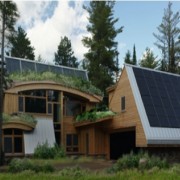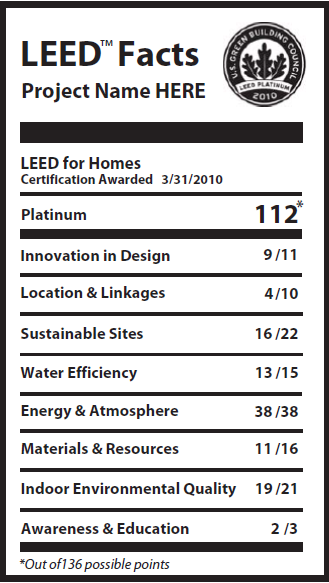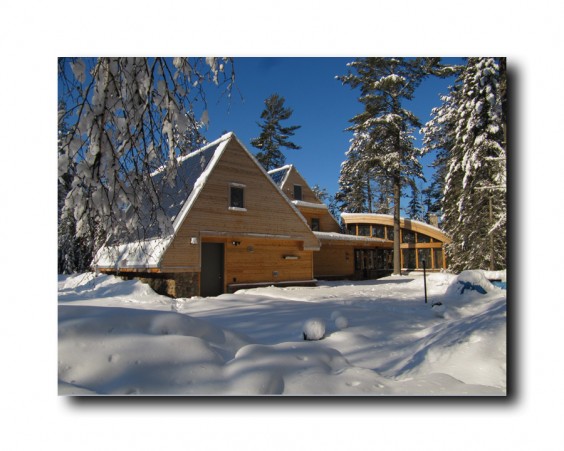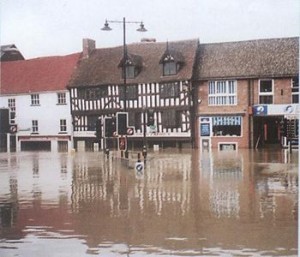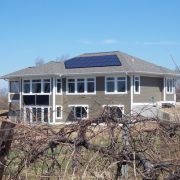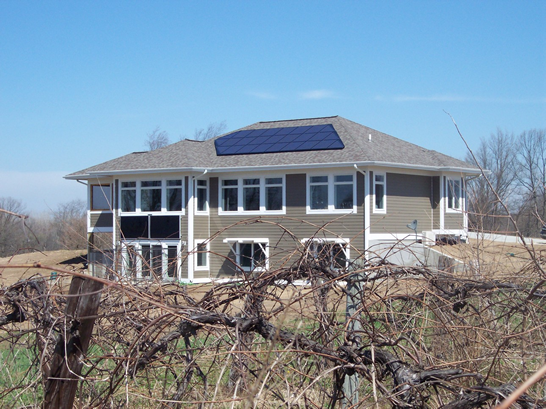This article republished from patch.com
As the first planned green home in Northbrook, the 4,500-square-foot, 2-story, 4-bedroom house will take advantage of the land’s orientation and unique flood, solar, and energy conservation characteristics. The home’s owner and general contractor is Ihab Riad, owner of Green Park Construction, a builder of luxury custom homes. As the first LEED-certified home in Northbrook, Mr. Riad expects to receive a rebate for the building permit fee, given Northbrook’s green building incentive program.
Riad, who currently lives in Mt. Prospect, hopes to showcase what can be accomplished with sustainable design and construction through this project, he and his family’s new home. Green Park Construction has already submitted design drawings for a preliminary LEED rating for the project. The LEED system gives credits for several different “green” metrics of a building, including energy savings, water efficiency, CO2 emissions reduction, recycled content, improved indoor environmental quality, and stewardship of resources and sensitivity to their impacts. Riad said initial estimates put his home at a LEED-Silver rating, and if he achieves some disputed points it could even achieve LEED-Gold, the second-highest rating the USGBC bestows, just below the net-zero energy rating of LEED-Platinum.
“We won’t be surprised if it scores higher (than silver),” Riad said. “We have a lot of innovation points from some of the systems we’ll be using, such as geothermal heating, but the goal is not to do these things just to get LEED points, we’re doing it because it’s the right thing to do.”
Riad was born in Egypt and moved to Mississauga, ?Canada, at the age of 16. Growing up in our neighbor to the north instilled a lifelong belief in environmentalism and green architecture, he said, a focus that is interwoven with his career in real estate and construction. The home was designed by Mark Rupsis, principal of Rupsis Associates in Shorewood.
“We embraced new ideas in the design stage,” Rupsis said. “Using geothermal, structural insulated panels and some of these other technologies are much different than conventional design, but actually quite easy once you know how all the pieces fit together.”
Structural insulated panels, or SIPs, are a composite building material. They consist of an insulating layer of rigid polymer foam sandwiched between two layers of structural board. The rigid insulation core of the SIP acts as a web, while the outer sheathing insulates. SIPs are unique because they combine several components of conventional building?such as studs and joists, insulation, vapor barrier and air barrier—into one material. They can be used for many different applications but are mainly being applied as a continuous air and vapor barrier on Riad’s house. All of the exterior walls will be SIPs or precast concrete panels. This continuous air barrier is designed to keep the cold out and keep heat pumped up from deep underground via the house’s geothermal heat pumps, in. The plans also call for highly insulating Anderson 400 series windows, bamboo flooring throughout and a Superior Walls foundation made of precast concrete. This will be the first home project in the Midwest where SIP walls were used with a Superior Walls foundation.
Riad is taking advantage of construction efficiencies made possible by these technologies. All of the SIP walls and precast pieces will be built in a factory and delivered to the site ready for installation.
“The first floor walls take two days to put up,” Riad said. “The second floor walls will be in up in a month. We’re expecting one to two days for the installation of the foundation, as well.”
By using these delivery methods Riad can take advantage of construction waste reduction credits available in the LEED system as well as innovation credits that could contribute to a LEED-Gold rating. Riad expects the roof and all of the walls to be installed and completed by January and the home ready to live in by August 2011.
Riad had nothing but good things to say about working with the Village of Northbrook’s Planning Department to approve his unconventional home.
“Our staff had to do research on these emerging technologies to make sure they were compliant with codes,” said Tom Poupard, director of planning and development services for the Village. “Most of our codes include performance-based standards, so as long as we can get documentation that a new approach meets or exceeds our requirements and does not cause some other problem, such as flammability, it is going to be fine.”
Poupard said the primary way in which the Village encourages green construction is by means of its LEED building program, wherein building permit fees are rebated to the homeowner after a home is certified by the USGBC. Since this is the first residential permit approved, Riad will receive a 100 percent rebate of the fees upon certification.
This article republished from patch.com

